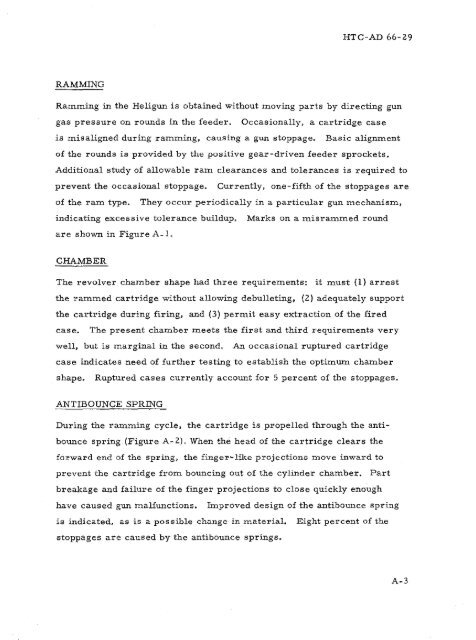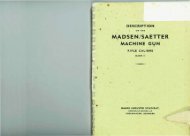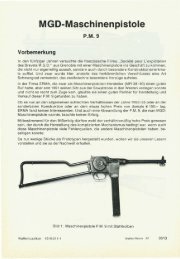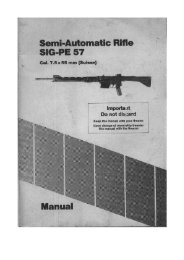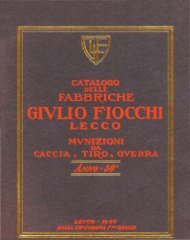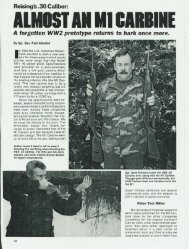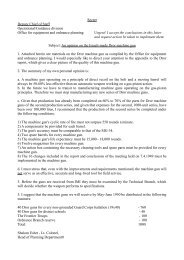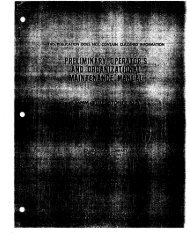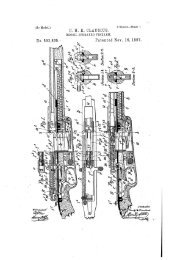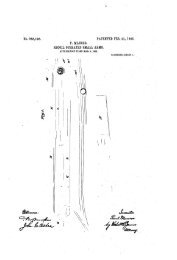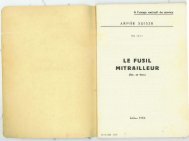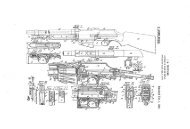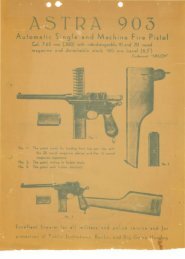Heligun EX17.pdf - Forgotten Weapons
Heligun EX17.pdf - Forgotten Weapons
Heligun EX17.pdf - Forgotten Weapons
Create successful ePaper yourself
Turn your PDF publications into a flip-book with our unique Google optimized e-Paper software.
RAMMING<br />
HTC-AD 66-29<br />
Ramming in the <strong>Heligun</strong> is obtained without moving parts by directing gun<br />
gas pressure on rounds in the feeder. Occasionally, a cartridge case<br />
is misaligned during ramming, causing a gun stoppage. Basic alignment<br />
of the rounds is provided by the positive gear-driven feeder sprockets.<br />
Additional study of allowable ram clearances and tolerances is required to<br />
prevent the occasional stoppage. Currently, one-fifth of the stoppages are<br />
of the ram type. They occur periodically in a particular gun mechanism,<br />
indicating excessive tolerance buildup. Marks on a misrammed round<br />
are shown in Figure A-1.<br />
CHAMBER<br />
The revolver chamber shape had three requirements: it must (1) arrest<br />
the rammed cartridge without allowing debulleting, (2) adequately support<br />
the cartridge during firing, and (3) permit easy extraction of the fired<br />
case. The present chamber meets the first and third requirements very<br />
well, but is marginal in the second. An occasional ruptured cartridge<br />
case indicates need of further testing to establish the optimum chamber<br />
shape. Ruptured cases currently account for 5 percent of the stoppages.<br />
ANTIBOUNCE SPRING<br />
During the ramming cycle, the cartridge is propelled through the anti<br />
bounce spring (Figure A- 2). When the head of the cartridge clears the<br />
forward end of the spring, the finger-like projections move inward to<br />
prevent the cartridge from bouncing out of the cylinder chamber. Part<br />
breakage and failure of the finger projections to close quickly enough<br />
have caused gun malfunctions. Improved design of the antibounce spring<br />
is indicated, as is a possible change in material. Eight percent of the<br />
stoppages are caused by the antibounce springs.<br />
A-3


